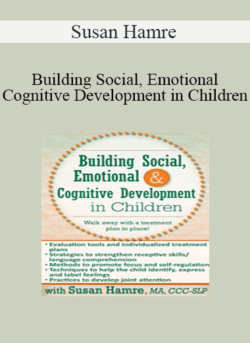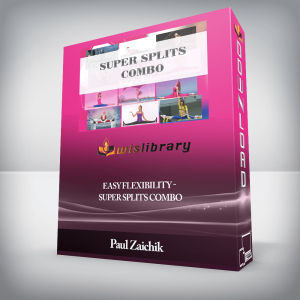6 Hours 12 MinutesYou are the one working with them. The one trying to prevent this. The one who’s supposed to help this kid get better. Is there something I’m missing? Could I be doing more? How do I manage my liability?Purchase Suicide and Self-Harm in Our Youth: Assessment Tools and Treatment Approaches that Help Clients Heal – Tony L. Sheppard courses at here with PRICE $199.99 $84Recognize indirect signs of suicide risk and effectively measure an array of risk factorsMotivate and positively engage suicidal and self-harming youth in their treatmentInterventions to build your clients’ coping skills and improve their interpersonal effectivenessEffectively work with school, peers and family – employ a multi-systemic treatment approachUnlock online tools that facilitate social connection and develop a sense of belonging in your clientsBut fear won’t steer you away. You won’t let them face it alone.Be prepared to offer these kids guidance and hope.Dr. Tony Sheppard is a licensed psychologist and certified group psychotherapist who has trained hundreds of clinicians, educators, and medical professionals in the treatment of self-harm and suicidal ideation. In more than 15 years of working with children, adolescents, and young adults, Tony has uncovered the specific tools and techniques you need to help your young suicidal and self-harming clients.Watch this essential seminar and walk away with:Assessment and screening tools specifically tailored for NSSI and suicidal youth.Tips for working with schools, peers, and families to improve treatment outcomes.Motivational techniques that engage teens and adolescents in their treatment.Replacement behaviors for Non-Suicidal Self Injury clients.Distraction strategies that help clients cope in crisis.Interventions that enhance self-esteem and self-acceptance.Exercises that develop problem solving skills in clients and their families.5 tips for assessing online resources for helping suicidal and self-harming youth.Employ clinical screening and assessment tools to help you determine which clients present the highest risk for suicide.Apply motivational techniques that engage resistant suicidal and self-harming teens in the therapeutic process.Develop strategies for incorporating schools and peer groups into your treatment plans for suicidal and self-harming clients, and communicate how this multi-systemic approach can improve treatment outcomes.Articulate how alternative coping strategies can be introduced in-session to help self injuring clients manage triggering situations without engaging in self-harm.Communicate how clinicians can foster support among family members with techniques that promote problem solving and communication, and help young people feel in control and part of the therapeutic process.Utilize therapeutic interventions from Dialectical Behavior Therapy to improve your clients’ coping skills and interpersonal effectiveness.Non-Suicidal Self Injury (NSSI) and SuicidePrimary motivations and neuropsychologyNSSI and traumaSuicide and Suicidal Ideation – symptom or diseaseIs youth suicide contagious?Means and means restrictionRelationship between NSSI and suicideAssessment is the Key to Effective TreatmentA matter of trust – clinical implications of research on confidentiality of minors with mental health concernsDifferential diagnosisClinical screening and formal assessment tools for NSSIRecency and frequencySeverityTriggersWho’s awareSuicide risk assessmentSAFE-TPATH WARMIdeation, plan, means, intentLevel of riskInterventionUse the Stages of Change/Motivational Interviewing Model in TreatmentAssess readinessGauge interventionsMotivational techniques that engage teens and adolescents in their treatmentSustain and maintain recoveryCase exampleTherapeutic Interventions Drawn from Interpersonal Neurobiology, CBT, and DBTDevelop distraction strategiesBuild coping skillsEnhance self-esteem and self-acceptanceImprove relationships and relational skillsAddress trauma (Big T and Little T)Develop problem solving skillsThe role of adjunctive therapiesReplacement Behaviors for NSSIUse of alternative harm behaviorsSimulation strategiesProceed with cautionCase exampleEmploy a Multi-Systemic Treatment ApproachWorking with parentsEducate and consultNo one understands me – Validation in the family contextThe issue of controlContract to curb NSSI and Suicidal Ideation MonitoringThe role of the schoolWho needs to know/how much?Reporting to parentsBuild “Trusted Adult” support networksThe role of peersThe impact of Veteran suicide on family dynamics and connectednessSocial Media, NSSI, and Suicide: The Harm and The HelpCyberbullicide – The impact of online bullyingVideo sharing, social media and self-injurySupport and connection through social media, apps, and other technologies5 tips for assessing online resourcesOnline tools you can useTag: Suicide and Self-Harm in Our Youth: Assessment Tools and Treatment Approaches that Help Clients Heal – Tony L. Sheppard Review. Suicide and Self-Harm in Our Youth: Assessment Tools and Treatment Approaches that Help Clients Heal – Tony L. Sheppard download. Suicide and Self-Harm in Our Youth: Assessment Tools and Treatment Approaches that Help Clients Heal – Tony L. Sheppard discount.Purchase Suicide and Self-Harm in Our Youth: Assessment Tools and Treatment Approaches that Help Clients Heal – Tony L. Sheppard courses at here with PRICE $199.99 $84

 Susan Hamre – Building Social, Emotional and Cognitive Development in Children
₹6,806.00
Susan Hamre – Building Social, Emotional and Cognitive Development in Children
₹6,806.00
 Art Therapy: Hands-on Approaches to Assessment, Diagnosis and Treatment – Ellen Horovitz
₹13,944.00
Art Therapy: Hands-on Approaches to Assessment, Diagnosis and Treatment – Ellen Horovitz
₹13,944.00
Suicide and Self-Harm in Our Youth: Assessment Tools and Treatment Approaches that Help Clients Heal – Tony L. Sheppard
₹13,944.00




